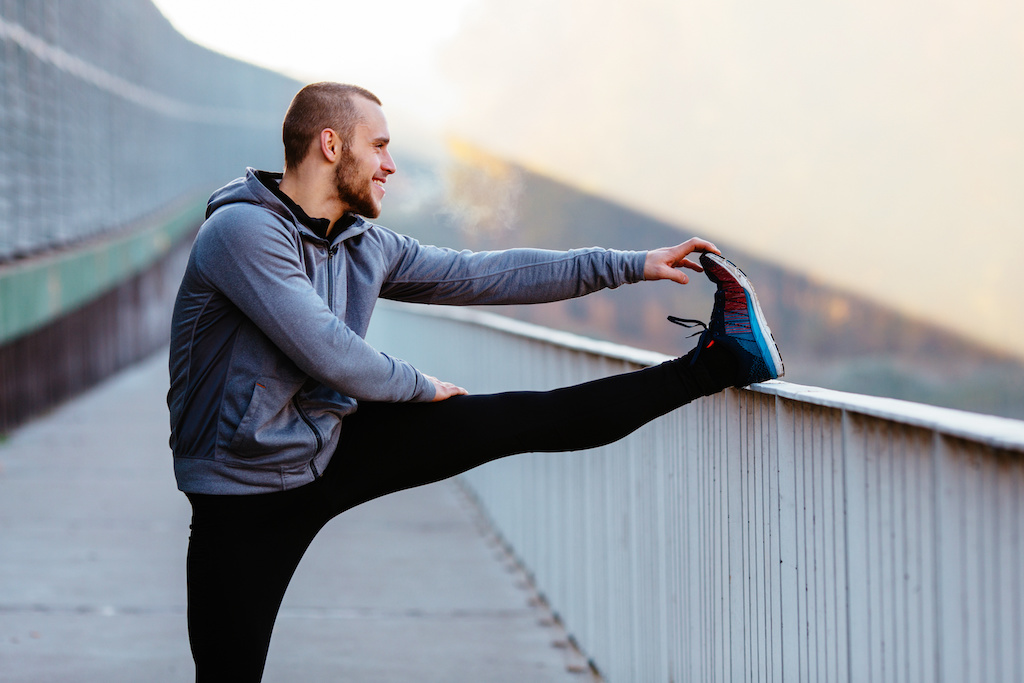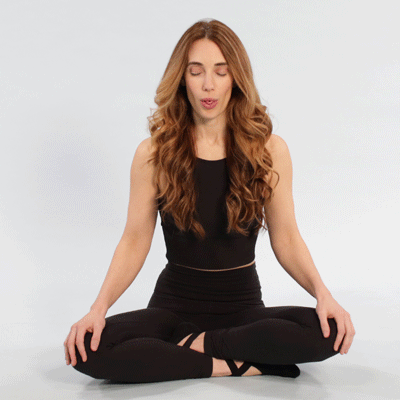If touching your toes feels out of reach, it might be time to focus on boosting your flexibility. Incorporating dedicated flexibility exercises a few times a week can transform how your body feels and moves. From mindful breathing to targeted exercises, small efforts can lead to big improvements. Dive into our beginner’s guide and start your journey to greater flexibility, one step at a time.
Why Flexibility Matters?
Flexibility plays a crucial role in our daily lives, influencing everything from our ability to perform basic tasks to our overall physical health. Consider the simple act of bending down to pick up the laundry or stretching to reach an item on a high shelf. When your muscles are stiff and inflexible, these everyday actions can become difficult and uncomfortable. Maintaining flexibility is essential for alleviating muscle tension and soreness, which in turn promotes relaxation and physical comfort. Imagine trying to find a comfortable position if your muscles are constantly tight and aching; flexibility helps to reduce this discomfort, allowing you to move more freely and with less pain.

Furthermore, flexibility contributes to better aerobic fitness, muscular strength, and endurance. When your muscles are able to move through their full range of motion, they perform more efficiently and effectively. This can enhance your overall athletic performance, reduce the risk of injuries, and improve your ability to perform various physical activities with ease. Flexibility also supports joint health by ensuring that joints can move smoothly and without restriction. This is particularly important as we age, as maintaining flexibility can help to prevent the stiffness and loss of mobility that often comes with aging. In addition to these physical benefits, flexibility exercises often incorporate elements of mindfulness and breath work, which can reduce stress and improve mental well-being. A flexible body often leads to a more relaxed mind, creating a holistic approach to health and wellness.
Crafting the Perfect Flexibility Routine for Your Needs
Creating a flexibility routine tailored to your specific needs is essential for maximizing benefits and ensuring long-term success. Here’s how you can build a personalized flexibility routine that fits seamlessly into your lifestyle:
1. Assess Your Current Flexibility Level
- Start with a Self-Evaluation: Identify which areas of your body feel tight or restricted. Simple tests like trying to touch your toes or reaching overhead can help pinpoint areas needing improvement.
- Set Realistic Goals: Determine what you hope to achieve, whether it’s improved mobility for daily tasks, enhanced athletic performance, or reduced muscle tension.
2. Schedule Regular Stretching Sessions
- Consistency is Key: Aim to stretch at least 3-4 times a week. Consistent practice leads to more noticeable and lasting improvements.
- Integrate Into Your Routine: Find times that work best for you, such as incorporating stretches into your morning routine, during breaks at work, or as part of your cool-down after exercise.
3. Focus on Proper Technique
- Warm Up First: Always warm up your muscles with light cardio or dynamic movements before stretching to prevent injury.
- Mindful Stretching: Pay attention to your body and avoid pushing into pain. Stretch until you feel a gentle pull and hold that position.
- Breath Work: Incorporate deep breathing into your stretches to help relax your muscles and increase the effectiveness of each stretch.
4. Monitor and Adjust Your Routine
- Track Your Progress: Keep a journal or use an app to log your stretching sessions and note improvements in flexibility and comfort.
- Listen to Your Body: Adjust the intensity and duration of your stretches based on how your body responds. If you experience discomfort or pain, modify your approach accordingly.
5. Incorporate Flexibility into Your Overall Fitness Plan
- Combine with Strength Training: Flexibility exercises complement strength training by ensuring muscles can move efficiently through their full range of motion.
- Balance with Aerobic Activities: Activities like yoga and pilates not only improve flexibility but also enhance balance, coordination, and cardiovascular health.
The Power of Breath Work in Flexibility Training
Proper breathing is a vital component of all exercises, especially stretching. Mastering breath work can significantly enhance the effectiveness of your flexibility routine.
1. Diaphragmatic Breathing: The Foundation of Breath Work
Diaphragmatic breathing, commonly referred to as deep belly breathing, is a fundamental technique that revolutionizes your breathing patterns, enhancing efficiency and reducing effort. At its core, this method directs your focus towards the engagement of the diaphragm, a large muscle located between the chest and abdomen. By consciously engaging the diaphragm, you enable yourself to draw in air more deeply and fully, optimizing oxygen intake and respiratory function.
How To:
- Find a comfortable position, either standing or sitting in a chair.
- Inhale slowly and deeply through your nose, directing the air downwards towards your abdomen.
- Visualize your lungs expanding and your diaphragm descending, pushing your belly outward.
- Feel your rib cage gently expand as your lungs fill with air.
- As you exhale through your mouth, gently contract your abdominal muscles and pelvic floor muscles.
- Imagine drawing your navel towards your spine and lifting your pelvic floor upward.
- Focus on the sensations in your body, noticing the expansion and contraction of your rib cage and abdomen.
- Continue this deep, rhythmic breathing pattern for several minutes, allowing yourself to fully relax and unwind.

2. Seated Inhale and Exhale
Deepen your diaphragmatic breathing practice by incorporating gentle arm movements. This adds a dynamic element to your breath work, further promoting relaxation and enhancing the mind-body connection.
How To:
- Begin in a seated position, comfortably cross-legged with your spine tall and your shoulders relaxed.
- Allow your arms to rest by your sides, palms facing inward towards your thighs.
- Inhale deeply through your nose, expanding your belly as your diaphragm descends. Feel the air fill your lungs completely.
- As you exhale through your mouth, engage your abdominal muscles and pelvic floor, gently drawing your navel towards your spine.
- With each breath, visualize tension and stress leaving your body, creating space for relaxation and peace.

3. Seated Side-to-Side Stretch
Continue to enhance your diaphragmatic breathing practice by incorporating a gentle side-to-side stretch. This movement not only promotes flexibility in the torso but also encourages deeper breathing and relaxation.
How To:
- Begin in a comfortable seated position, crossing your legs and ensuring your spine is tall.
- Allow your arms to rest by your sides, palms facing inward towards your thighs.
- Inhale deeply through your nose, expanding your belly as your diaphragm descends. Feel the air fill your lungs completely.
- As you exhale through your mouth, engage your abdominal muscles and pelvic floor, gently drawing your navel towards your spine.
- With each breath, visualize tension and stress leaving your body, creating space for relaxation and peace.

4. Lying Twist
Embrace the power of breath as you deepen your stretch with the lying twist. By syncing your breath with movement, you can enhance the effectiveness of this stretch and promote a greater sense of relaxation.
How To:
- Begin by lying on your back on the ground, ensuring your spine is straight and your body is relaxed.
- Extend your arms out to the sides to form a T shape, palms facing down.
- Slowly twist your lower body to the right side, bending your left leg and allowing your left knee to rest on the ground.
- Keep your shoulders grounded as you turn your head to the left, allowing your gaze to follow your outstretched arm.
- With each exhale, consciously relax your body, allowing yourself to sink deeper into the stretch without forcing or straining.

5. Cat-Cow
Engage your spine, core, and chest with the rejuvenating Cat-Cow yoga pose. By incorporating mindful breath with movement, you’ll amplify the benefits of this stretch for your entire body.
How To:
- Begin in a tabletop position with your wrists directly under your shoulders and your knees under your hips.
- As you inhale, arch your back, lifting your chest and tailbone towards the ceiling. Allow your stomach to gently sink towards the ground as you lift your gaze towards the sky.
- Exhale slowly as you round your back, tucking your chin towards your chest and drawing your belly button towards your spine. Feel the stretch along your spine as you press firmly into the ground with your palms.

Conclusion
Embracing a flexibility routine can be transformative, providing a multitude of benefits that enhance both physical and mental well-being. Flexibility is not merely about achieving greater range of motion; it’s a fundamental component of overall health that influences daily activities, reduces muscle tension, supports joint health, and enhances athletic performance. A dedicated flexibility routine can alleviate discomfort, improve posture, and contribute to a more relaxed and stress-free lifestyle.
By incorporating regular stretching and mindfulness techniques such as diaphragmatic breathing, you can significantly improve your flexibility over time. Building a personalized routine that includes consistent stretching, proper technique, and a balanced approach to overall fitness will help you achieve your flexibility goals. Remember, flexibility is a journey, and with persistence and attention to your body’s needs, you can enjoy greater freedom of movement and a more vibrant, active life.